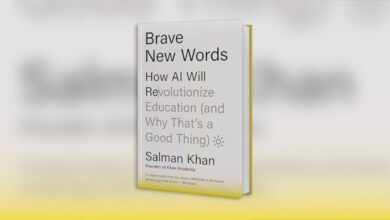A Major Cyber Threat for 2024?

Although many have hailed artificial intelligence technology as a new paradigm that will revolutionize work across the board, others have condemned it as a dangerous new shift. The truth is arguably somewhere in between.
Although there are plenty of ways to use AI to help people, there are also some frightening cyber threats the technology has posed. Identifying and understanding these cyber threats is the first step in mitigating them and allowing those who hope to use artificial intelligence for positive uses.
Artificial intelligence has shown the potential to be an influential tool in many industries, paving a path toward improved productivity and streamlined work. AI can process data at rates much more efficiently — and often more accurately — than humans, enabling them to automate several monotonous tasks.
However, as with any innovative technology, wrongdoers have found ways to abuse the technology for malicious purposes. Capabilities and use cases designed to help people are instead being used for hackers’ and scammers’ personal gain by leveraging the same data-processing capabilities that allow artificial intelligence to be such a helpful tool in many industries to create dangerous situations.
Some of the most dangerous use cases for artificial intelligence have been in the cybersecurity space, where hackers and other wrongdoers are finding new applications for the technology that pose cyber threats to individuals, organizations, and perhaps even governments. Without understanding and taking steps to mitigate the risks posed by artificial intelligence, individuals and entities could be putting their data at significant risk.
Use of AI Technology to Perpetuate Scams and Fraud
One of the most dangerous abuses of artificial intelligence technology has been scammers’ use of AI to improve their phishing schemes. Large language models can impersonate legitimate humans with a frightening degree of accuracy when they are trained on data showing that person’s writing style, syntax, and other aspects of their voice.
In the past, attentive individuals could identify phishing scams by looking for mistakes like grammatical errors or inconsistencies in voice. AI has made it exceedingly difficult to distinguish between authentic and fraudulent messages.
AI technology also improves scammers’ ability to produce fraudulent images and audio, known as “deepfakes.” AI technology can create convincing fraudulent images of a person’s likeness in minutes or even seconds. Worse yet, the pictures and audio they create are more convincing than a human could create manually, making it difficult for people to determine what’s real and fake.
The implications of AI on these scams are alarming. On a small scale, scammers now have the tools to defraud people of their money and livelihoods easily, though the impact of such malicious activity could spread even further. Using deepfake technology, wrongdoers could contribute to the spread of misinformation on a massive scale, producing convincing false images to use for blackmail or reputational damage.
Automating Cyberattacks Using Artificial Intelligence Technology
AI technology can automate cyberattacks against vulnerable networks. Hackers have trained models to constantly probe networks for vulnerabilities, allowing them to exploit these flaws often before the network operator is even aware of them. These AI-automated cyberattacks are more challenging to detect and respond to, making them particularly dangerous.
Artificial intelligence technology’s data processing capabilities can conduct attacks on supply chains. By attacking a single link in the supply chain, a hacker could wreak havoc on the entire system or even the industry. When these supply chains are in critical infrastructure fields, there could be profound effects on people’s lives and livelihoods.
The Consequences of the Abuse of AI
The most obvious risks of abusing AI technology are to people’s sensitive or confidential data. Many phishing and deepfake scams target financial information or personally identifiable information for identity theft, and the cost of falling victim to one of these scams can be financially ruinous for many.
On a larger scale, artificial intelligence can target businesses in a way that could have an even more profound impact. For example, if a scammer gets access to a business’s network by targeting an employee, not only could the business’s data be put at risk, but also that of their clients. The result starts with financial loss but could go so far as devastating reputational damage if a company is guilty of leaving its clients’ data vulnerable and exposed.
Improvements in AI technology could even put entire countries’ security at risk. Since many critical infrastructure systems now operate with computers, artificial intelligence could exploit vulnerabilities in everything from telecommunications and finance infrastructure to power grids. In the wrong hands, AI tools could potentially be a disruptive and destructive force for society.
Fighting Back Against the Misuse of AI
Thankfully, not all artificial intelligence tools cause harm. Innovators are also making significant strides in AI tools that can improve cybersecurity. For example, just as wrongdoers can use AI to identify and exploit vulnerabilities in systems, the owners of those systems can use AI to identify vulnerabilities to repair the damage they cause. Models also exist to be used to analyze messages to determine whether they are legitimate or potentially fraudulent.
Additionally, individuals and organizations have an opportunity to be proactive about cybersecurity by instituting proper education, training, and procedures. Businesses should teach employees how to identify potential phishing attacks and proper cybersecurity practices like using strong passwords and two-factor authentication. In doing so, they can make their employees more prepared and less vulnerable to the threats posed by artificial intelligence.
For better or worse, AI is going to change the world. For all of the positive applications of this technology, there are plenty of use cases that wrongdoers have found that could cause tremendous harm. However, by being vigilant about the risks that AI poses to cybersecurity — on an individual, organizational, and even societal level — we can create a future where AI can be used as a tool to help the world.



